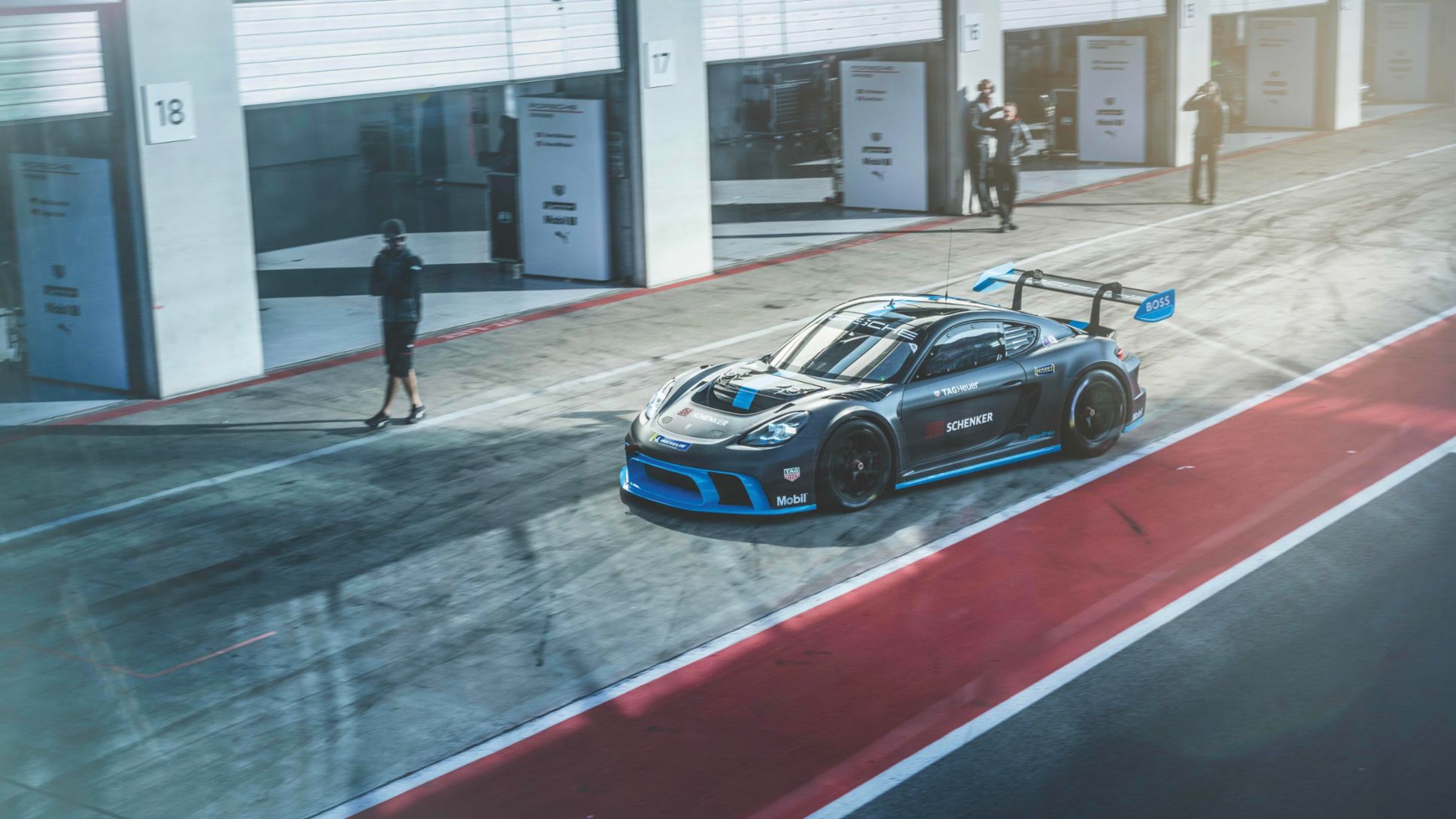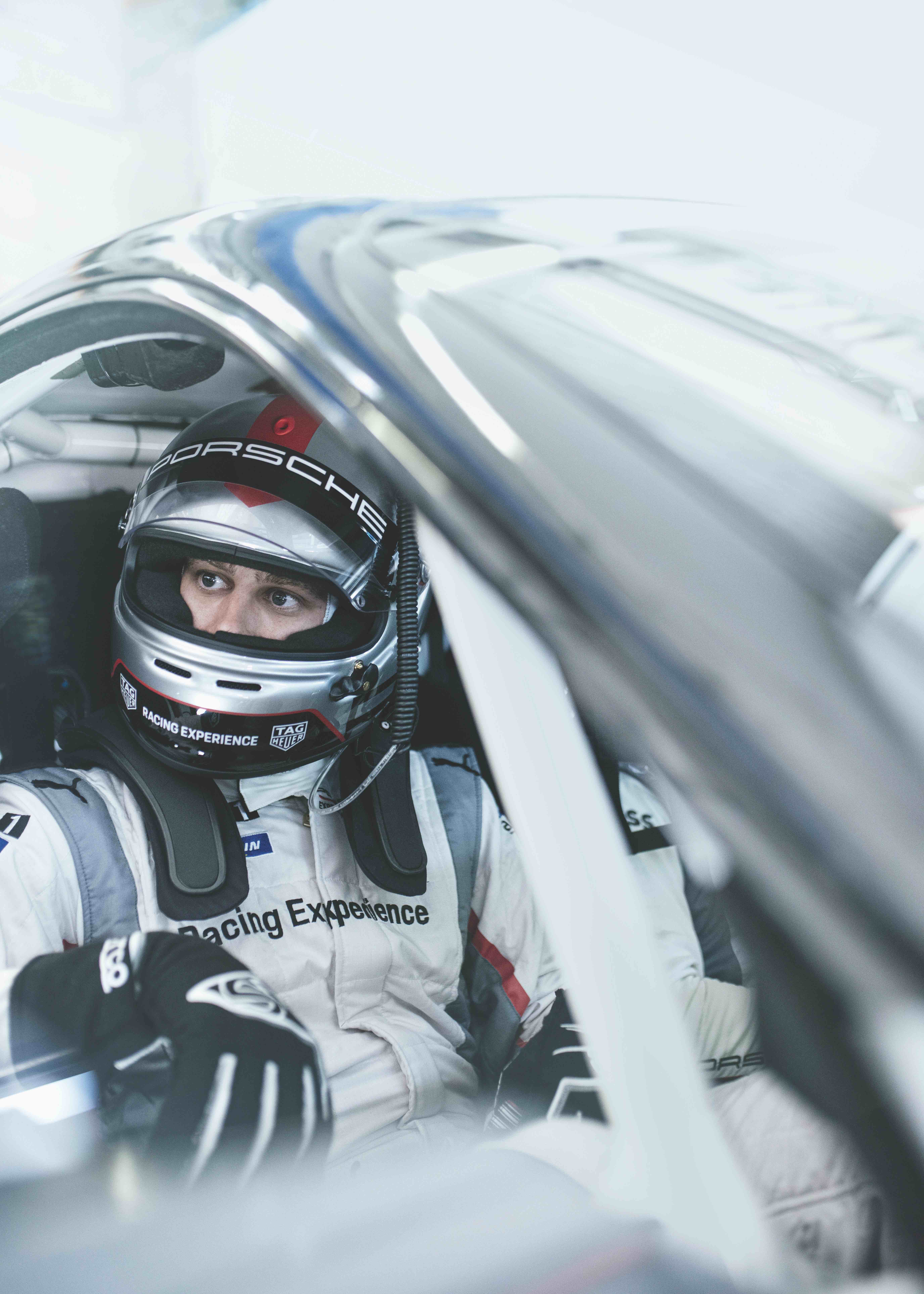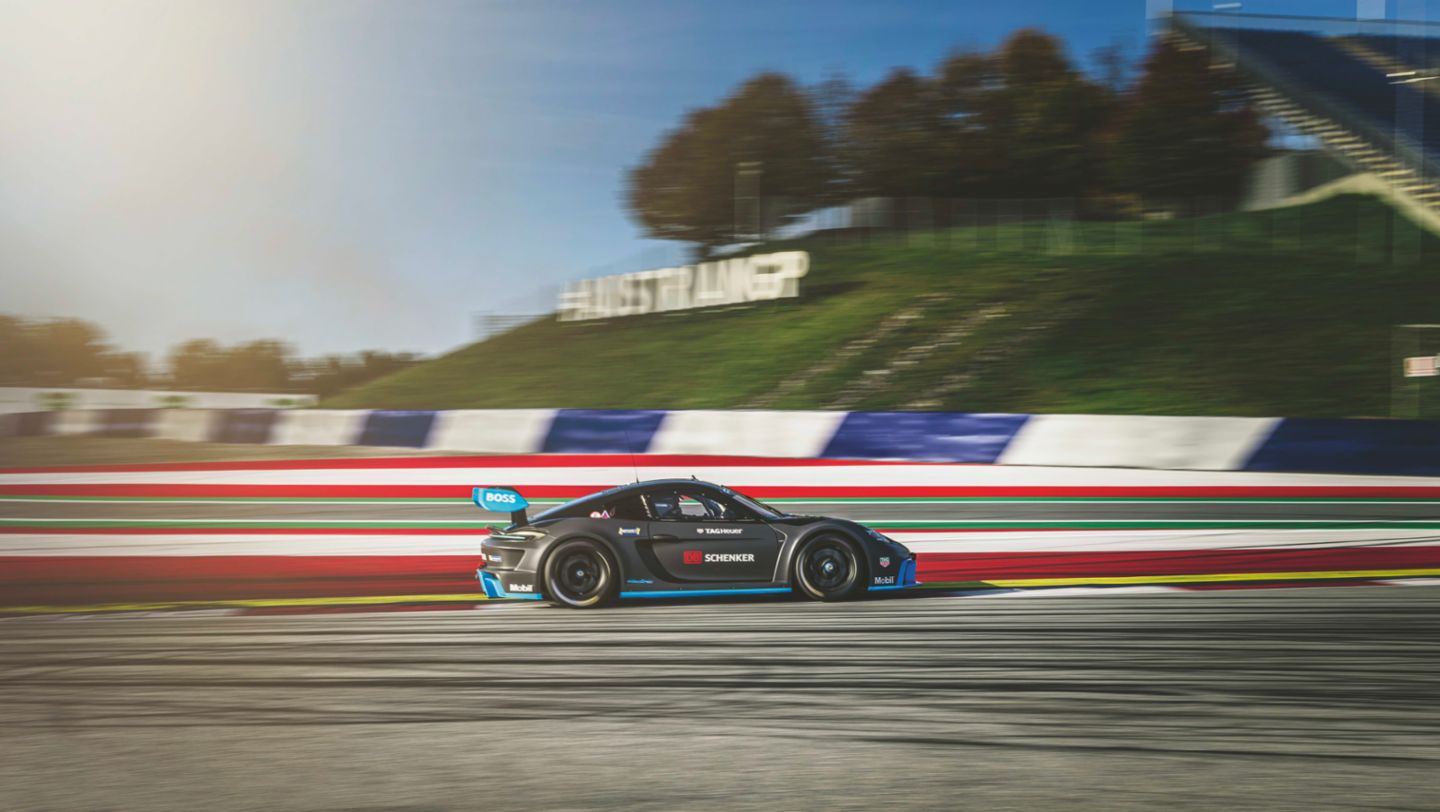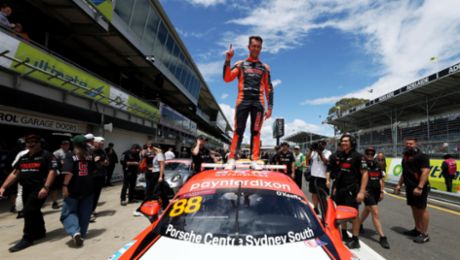Klaus Bachler is right at home in the land by the river – which is what Austria calls itself in the second line of its national anthem. And currents in their electrified form have had a part in fuelling his professional life since 2020. As a race driver, the Austrian native of Styria races up to 25 weekends a year in petrol-powered GT Porsches. But when he talks about being one of the development drivers of the Porsche GT4 e-Performance, he especially likes to emphasise the word ‘privilege’.
This car made history one spring day almost three years ago, when Bachler drove the first few metres in this historic race car for Porsche. It is the first all-electric racing car to be built in-house, and it represents the future of racing – or rather, drives it.
Open to new technologies
Bachler is 31 – old enough to have been socialised as a classic petrolhead, and yet young enough that when asked whether he has ever had any prejudices against electric mobility, he replies almost indignantly, “I've never had any. I'm always very open to new technologies.”
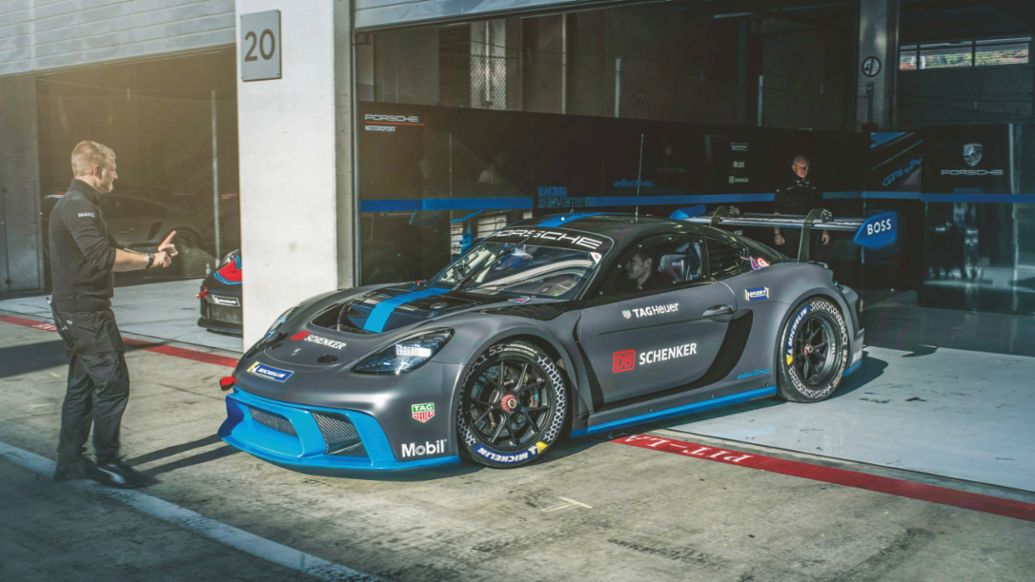
Especially when they unleash so much power. “1,088 PS – from zero to 200 km/h in 5.6 seconds, you’re already at 100 in 2.3 seconds. I think those numbers say everything.” Almost everything – the rest is for Klaus Bachler to tell us, the man who works inside this prototype.
What is the biggest difference when compared to the Porsche combustion engine? “That's clear – the performance. It is phenomenal. And then there's this responsiveness. Of course, the electric motor emerges from a low engine speed immediately, it has an extremely high drag torque. With all this power combined with all-wheel drive – you also have to adjust your driving style.”
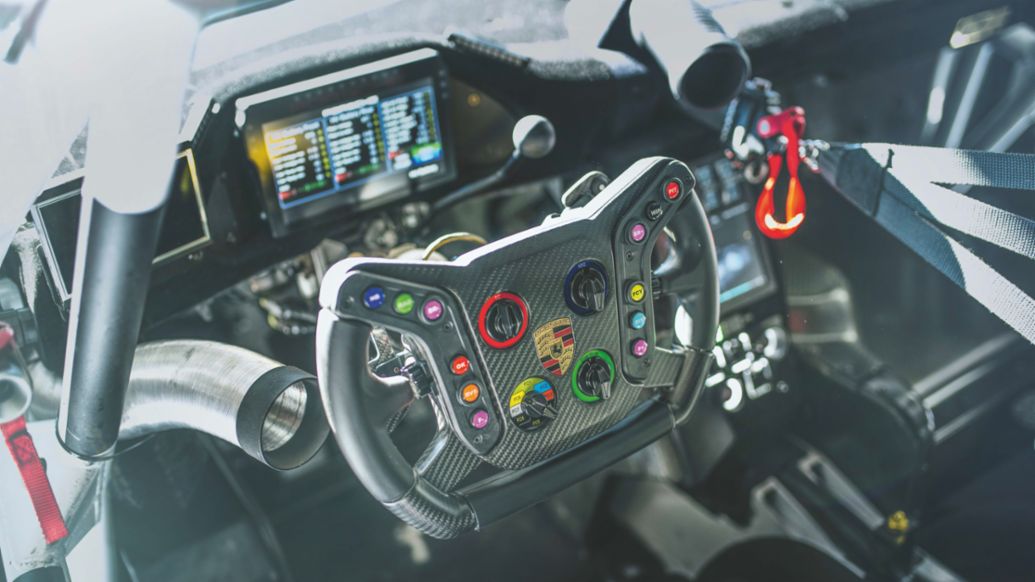
So we asked the pilot more on the style. How do you drive this electric machine? “You have to make a clear distinction here. Are you doing a timed lap at maximum power, i.e. with all 1,088 PS – or is it a race? On a qualifying run with that much power, it's important to get the car straight as quickly as possible – it has to already be at the apex to really accelerate. You always get a good lap time at the exit. In other words, the time before the car turns into the curve has to be as low as possible.”
That's why you can be and have to be very aggressive in your setup to get the car turning on the brakes as quickly as possible in qualifying mode. “But in race trim we clearly have less power, but still a lot – 450 kilowatts. But in this phase, both the driving style and the setup are much closer to what you have with a combustion engine.”
"You have to get used to the performance"
What do talented amateurs have to keep in mind with these race cars? “The first thing is straightforward – you have to get used to the performance. We have an acceleration – one that is so impressive that professionals are actually more than impressed. But the good news is, once you've done it and experienced it often enough, this GT4 e-Performance is relatively easy to drive and control.”

Also during races. But how will their character change if all cars are charged instead of fuelled? “There is no definitive answer to that at the moment,” Bachler admits, “So far we've only been working with this one prototype. We haven't been able to drive two GT4 e-Performance closely and in a two-person race yet to experience the specific effects in detail. But I don't think there will be a big difference in racing when compared to races with petrol-powered GT race cars like the RSR.” Why? “The truth is simple. Everyone either wants to be first into the corner or first out. The type of drive won't change the nature of the two-person race dramatically. Everything boils down to the basic essence of that of a race driver.”
When will we see this car in action?
The development driver is not the one who is able or even wants to be the judge of that. “It was our job to get a prototype onto the racetrack that works. Now we'll have to wait and see what can be done with these cars in the future.
Either you create one Manufacturers' Cup in the style of the successful examples of the Supercup and Carrera Cup, or there will soon be plenty of other manufacturers developing similar race cars. That would give us the chance to race against other prototypes as well.”
The possibilities of the race car also extend beyond the circuit. Who wouldn't want to see a powerhouse like the GT4 e-Performance in hill climbs?
Stirs up all racing senses
It's important, especially for customer racing, to build a car that is also user-friendly. “I was involved in the development from the start, and it was extremely intense. But also extremely interesting – highly complex as well as very different from testing a race car with a conventional drive.”
But it was worth it. “Now we have a car that on the one hand drives well and on the other hand is easy to drive – which is important for those who will be driving cars like these in the future and who will want to enjoy racing with them. A car that stirs up all of your racing senses with its intense acceleration, but that also doesn't overwhelm you.”
Bachler now has the first witnesses to support this fact. As part of the Motor Racing Academy at the Red Bull Ring, the participants, all prospective race drivers themselves, had the opportunity to drive in Bachler's GT4 e-Performance. The feedback: “They were absolutely thrilled, especially with the acceleration and performance. They are not only impressed by its sheer power, but also by how well it handles the road. Despite the extra weight from the batteries, cornering is great and the handling in the chicanes is truly impressive.”
That is what the race driver who held the VLN lap record on the Nordschleife for years, who was victorious in Spa and who, from Le Mans to Daytona, has circled the most beautiful and historic racetracks in the world had to say. And who is now one of the first to know just how dynamically this race is accelerating into the future. With 1,088 PS and electrically charged.
Info
Text first published in the Porsche magazine STORIES.
Author: Gerald Enzinger
Photos: DNA Photographers
Copyright: All images, videos and audio files published in this article are subject to copyright. Reproduction in whole or in part is not permitted without the written consent of Dr. Ing. h.c. F. Porsche AG. Please contact newsroom@porsche.com for further information.
